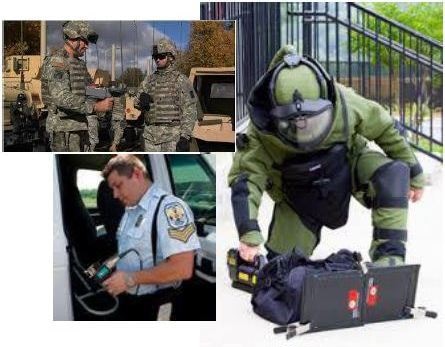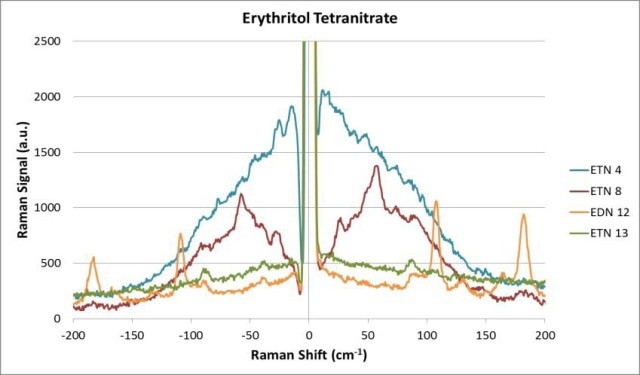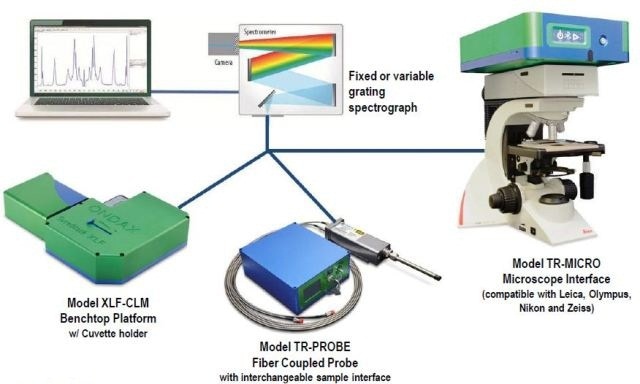Forward-deployed warfighters and security personnel have to rapidly and reliably determine various residues or compounds found in the field to differentiate between home-made explosive (HME) compounds and inert materials. Forensic experts need timely data in order to find those responsible, and contain the propagation of HME attacks.

Reliable, rapid and timely data is helpful to contain the proliferation of HME attacks.
Existing Techniques
Raman spectroscopy is a proven technique for chemical identification, but existing techniques can sometimes produce erroneous readings, and are not useful to determine “Who made it?”
Forensic experts require data relating to contaminants, ingredient sources, and manufacturing methods (or synthetic pathways), and the formulation technique and storage environment that provides information about where it was created. Special sample handling and preparation methods, and large and high-cost equipment are required to obtain this additional information.
Coherent Systems
Low-frequency/THz-Raman analysis identifies and differentiates ingredients, (Figure 1) synthetic pathways, and formulations, and also reveal changes concerning environment and storage (such as humidity and heat).
These factors reveal “signatures” or “fingerprints” in the molecular structure, which can help the forensic specialist to narrow or speed up their hunt for the perpetrator.
The range of traditional Raman spectroscopy is extended by THz-Raman® systems to the THz/low frequency regime, where differentiation of inter- and intra-molecular structures can be clearly seen. Anti-Stokes signals also improve SNR, and add to Raman intensity.

Figure 1. Multiple samples of ETN, representing systematic variations in primary ingredients as well as types of acids, salts, and preparation routes, show distinctive differences
The following are the key features and advantages of the Ondax systems:
- Quick, simultaneous capture of chemical and structural data
- Works with small traces of materials
- Improved sensitivity and reliability due to additional low frequency and anti-Stokes signals
- Non-destructive and non-contact
- Does not need sample preparation
- Works at standoff distance
- Compact, simple, and cost-effective
- Miniaturization is possible for portable or field use
Single System Handles THz-Raman and Fingerprint Region Measurements
THz-Raman analysis of ammonium nitrate and hexamethylene triperoxide diamine (HMTD) is shown Figure 2. The distinctive peaks in the low-frequency/THz-Raman region (green background) are higher than the traditional fingerprint range, adding signal, enhancing sensitivity, and lowering false positives. Peak symmetry about the excitation line allows auto-calibration, and improved data and system reliability.

Figure 2. THz-Raman analysis of HMTD and ammonium nitrate.
Coherent's patented THz-Raman® spectroscopy system expands the Raman spectroscopy range into the THz/low frequency regime. As a result, energy transitions with the same range of THz spectroscopy can be explored, without limiting the capability to measure the fingerprint region. Molecular structure and chemical composition can be simultaneously analyzed for advanced materials characterization.
The whole range of THz-Raman® systems from Coherent are robust and compact. The plug-and-play platforms are user-friendly, offering superior speed and throughput at an affordable cost. They have a number of sample interfaces, optional polarization control, and a wide excitation wavelength range of 488-1064 nm, making them suitable for any application.
For more information, download the brochure for THz-Raman range

Figure 3. THz-Raman® systems showing benchtop, probe and microscope configurations.

This information has been sourced, reviewed and adapted from materials provided by Coherent.
For more information on this source, please visit Coherent.